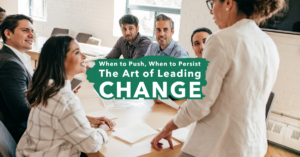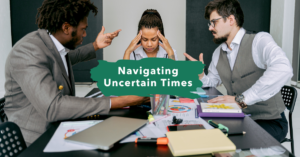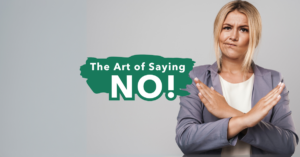If you had asked me ten years ago if I had a mindfulness practice, I would have scoffed at you. That stuff was for folks cloistered away in a religious community. It was for those that had quieter days, less to do, fewer responsibilities.
Now I know that the busier I am, the more I need these practices. That the heavier the situation, the more value mindfulness brings. That it is not about the setting or the situation, but about the thing that is always with me – my busy, busy thinking mind.
I’ve come to find that mindfulness practices do not have to take a lot of time. They don’t require mastery of some esoteric technique. And that mindfulness practices can take many shapes and forms, enabling me (and you) to find a practice (or practices) that fit you, your lifestyle, and your needs.
I’ve also come to find out that mindfulness is a practice, that it is best done with showing up day after day after day. Doing well one day and poorly the next is just part of the journey.
More importantly, I’ve learned that my life is richer, fuller and more focused when I do commit to a mindfulness practice. That my thinking is clearer and that my well-being is enhanced, even (or especially) in difficult times.
As a person with a relatively short attention span, I tend to use a variety of practices. In this blog, I’ll share four mindfulness practices that I consistently use. I use them because they are easy. I use them because I can do them anywhere and anytime. Most of all, I use them because they work.
Practice 1: Gratitude
A practice of gratitude pulls us out of “either or” thinking and provides a more balanced perspective. We can make the mistake of painting our circumstances as either “good” or “bad”. The reality is that every day, every week, every year is a blend of things that are welcome and others that are more difficult.
This practice involves just noticing the things in your life that you are grateful for. Most often they are simple things like a good meal, a walk with your dog, a conversation with dear friend. Our lives are filled with things to be grateful for, but far too often we are either too busy or too attuned to the negative in our lives that we fail to see the wonder and goodness all around us.
So take note. Make a daily list of 3 things you are grateful for. Snap a photo of things you are grateful for and create a visual library. Sit down for 10 minutes and fill a page with things you are grateful for. Express thanks to others. Lots of ways to do this….try one!
Practice 2: Meditation
I found I was mystified by meditation. Early attempts reinforced just how difficult it was to quiet my mind for even three short minutes.
It helped me greatly to understand that meditation, in its simplest form, is merely sitting still, breathing and noticing what came up in my mind and body. I began to realize that it was the act of stillness and the repeated attempts at “not thinking” and “just breathing” that was valuable.
There are many ways to meditate and many paths to build a practice of meditation. I use the App Headspace. I benefited from taking a few classes (often offered at a local church or yoga center). I started with a practice of Moving Meditation, in which I merely walked with a focus on being fully present and in the moment.
Here’s what I’d like you to know: If I can do this, you can too! Give yourself grace as you start and stick with it. Your reward will be better thinking (when you do think) and more peace of mind (when you need to stop overthinking).
Practice 3: Rituals
There are times in the day when we make transitions. From slumber to wakefulness. From home to work (even if they are in the same place at times). From work to home. And from wakefulness to slumber again.
I’ve found it very helpful to establish rituals in those transition points that help me more cleanly leave one state of being and into the other. None of my rituals take much time or effort. But as they become routine, they do signal to my mind and body that I am in a different place that required different things of me.
Here are a few examples of the rituals I’ve built into my days:
- As I wake, I do a few moments of stretching and yoga. The same routine, day after day. It awakens my body and my mind.
- I light a candle on my desk to begin each workday and set an intention on how I want to show up that day. The candle happens to be a tealight candle that lasts 6 to 7 hours – and when it goes out, it becomes a signal to me that the workday should begin to come to a close.
- Before I leave my workday, I make a prioritized list of what I’ll do tomorrow. This ritual provides closure to the day and gives me a quick start the next morning.
- My last action every night (while in bed) is to write in my gratitude journal, ending the day with a focus on the positive.
Practice 4: Breathing
Our breath is essential and automatic. So much, that we rarely notice, even though being more mindful of our breathing is a great way to provide focus, to calm jittery nerves or to reinvigorate ourselves.
The mere act of taking five full breaths when you are agitated results in immediate benefits. Find yourself tired? Take 10 deep breaths and envision energy flowing through your body. Stressed? Focus on your breath for 1 to 2 minutes and experience more calmness.
When you find yourself in a sub-optimal state of mind, create a practice of stopping and bringing more consciousness to your breathing. Easy. Simple. Effective.
If you’d like to do some more advance breath work for mindfulness, this article by Sean Fargo has six ways to do so.
Just Go Try Something!
I’m not encouraging you to do all four. I am encouraging you to take one practice (one of these or another) and give it a go. Stick with it even when you feel inept (as you will). Stick with it even when your mind just won’t calm down (there will be those days). Go a bit deeper into the practice (this blog is light on the details and there are far more options than I’ve covered.)
Most importantly, don’t go into this thinking your goal is an ever-present state of bliss. Instead, go into it knowing your aim is moments of clarity, even though fleeting. That your perspective will shift over time and you’ll have more balance and focus. That you’ll be more connected to your body, mind and heart. That you’ll notice and amplify the goodness in your life. That you’ll be a better thinker, better problem solver, and more creative. And that when things are difficult, as they invariably will, that you’ll be able to navigate those challenges with more grace and ease.
Give it a go and share what you experience! Please share what you are currently doing that works….what you’d like to try….or what benefits you experience with a practice of mindfulness.





2 Responses
Hi Kris,
After much trial and error, I recently purchased a Headspace subscription, because I find it works best for me (as in, I seem to connect with Andy’s voice, and like how the app works, as well as the topics they present). But a close second is the Ten Percent Happier app. I actually still get the newsletter/email from Ten Percent, because sometimes their explanations about things are insightful and helpful. I also like the free challenges Ten Percent offers occasionally (like the Election Sanity one 🙂).
Meditation has been proven to be effective, so I’m determined to make it a habit going forward. Once I got over the incorrect assumption that I’d eventually need to get it “right”, I knew it was time to commit and reap the benefits of just doing it.
Happy holidays!
Great post Kris. This is a topic I’ve been “noodling” on for a while…but noodling only goes so far, which is basically nowhere! lol. So I appreciate the post and it’s a nice gentle nudge for me to actually do something, however small, so thanks!
Also…as Karen referred to above, I’ve also been listening to Dan Harris’ 10% Happier podcast as well as several others during my windshield time but am in between books so in case you have any “must reads” on this general topic, I’d love to hear them…and I promise I won’t use them as just another excuse to noodle some more! Thanks Kris….
Comments are closed.